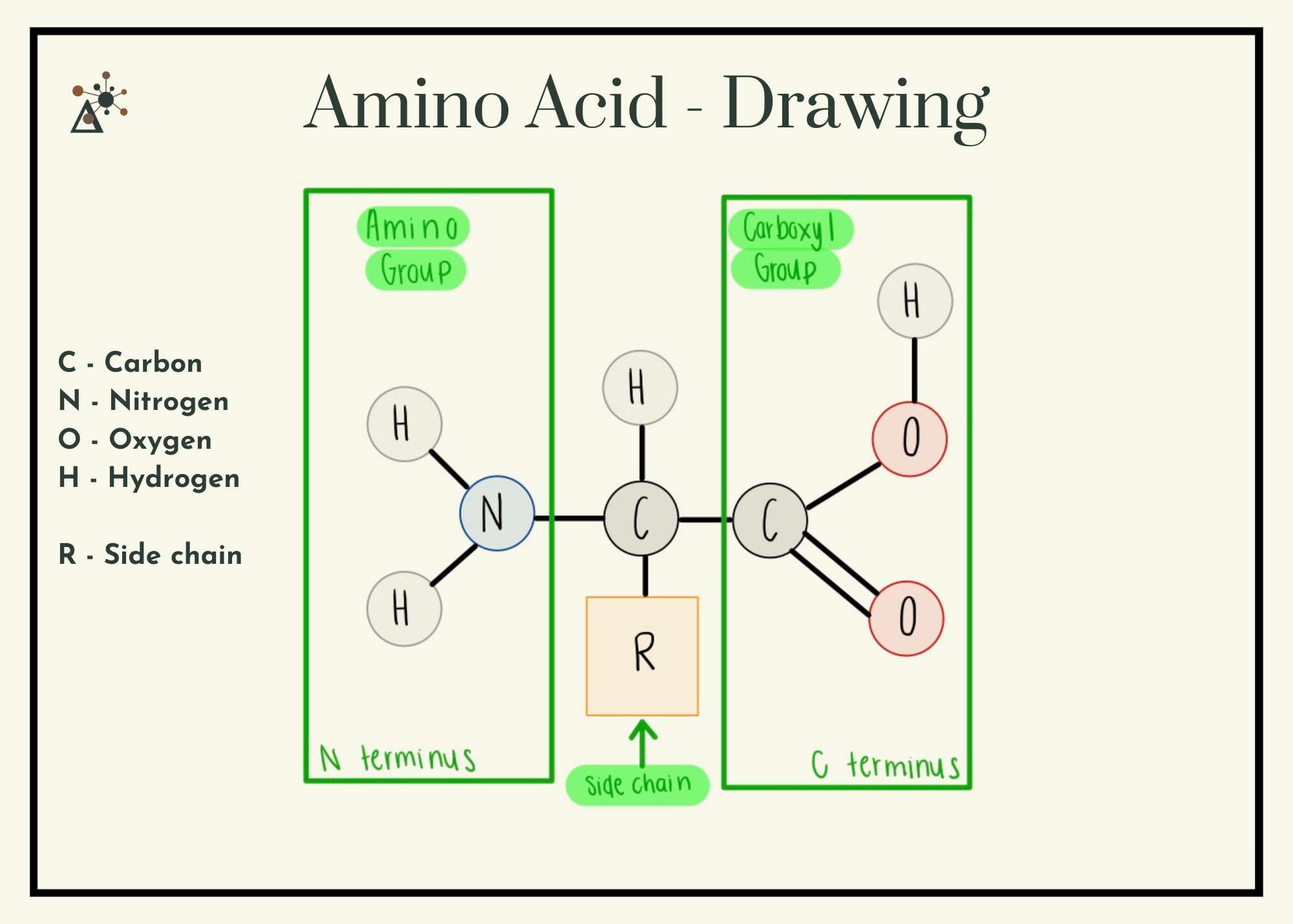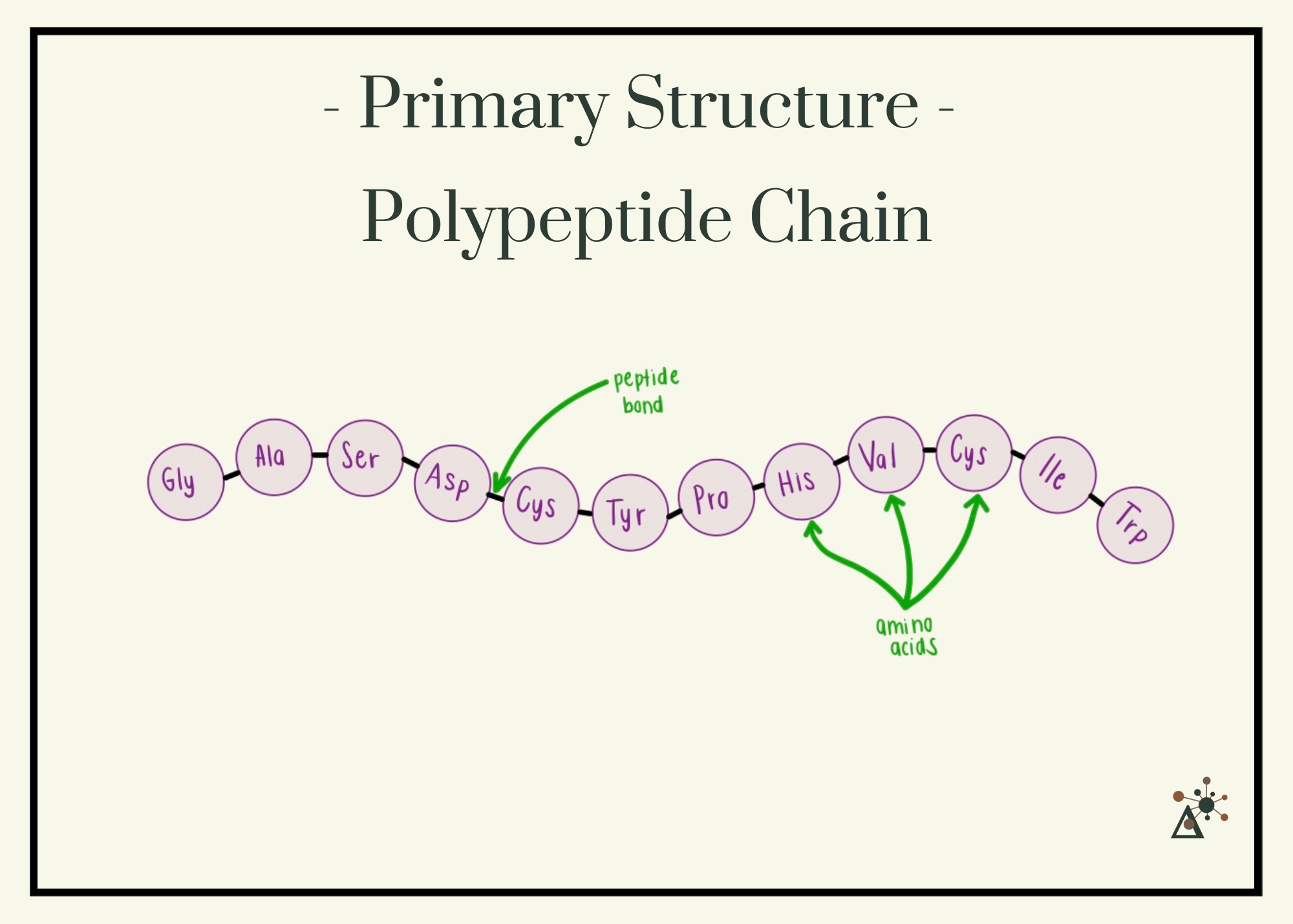What Are Proteins and How Do They Work?
Proteins are essential macromolecules that all living things need to survive and function. They’re just one of the four major classes of macromolecules—the others being nucleic acids, carbohydrates, and lipids.
While we’ll explore the other macromolecules in future posts, it’s important to know that each of these biomolecules plays a vital role in keeping organisms alive and functioning.
In your own body, there are tens of thousands of distinct proteins at work. To even type this post, proteins are helping my muscles move and my neurons fire. But what exactly are proteins made of? What do they look like? And how do they work?
The Structure of Amino Acids
Proteins are made up of smaller molecules called monomers, which are the building blocks of a polymer. For proteins, these monomers are called amino acids.
Although there are different types of amino acids, all of them share a similar basic structure. Each amino acid contains:
An amino group (NH₂)
A carboxyl group (COOH)
A side chain, often called the “R group,” which is unique to each amino acid
Nature of Side Chains
The properties of an amino acid depend on the structure of its side chain. In humans, there are 20 common amino acids, and each one has a distinct R group that determines how it behaves chemically.
Some side chains are nonpolar and hydrophobic (water-repelling), while others are polar and hydrophilic (water-attracting). In addition, side chains with sulfur can form strong interactions with other molecules. In contrast, side chains made mostly of carbon and hydrogen are less reactive.
These side chain properties influence how amino acids interact with one another—and ultimately how a protein folds and functions. A protein’s function depends entirely on its structure—how it folds.
Now that we understand how amino acids differ, let’s look at how they link together to form proteins.
Formation of Proteins
To build a protein, amino acids are linked together through a process called polymerization. During this process, a dehydration reaction occurs: one amino acid bonds with another, and a molecule of water is released.
This bond between amino acids is called a peptide bond. As more amino acids join the chain, they form a polypeptide. Once the chain contains more than 50 amino acids, it's considered a true protein. Some proteins consist of a single polypeptide, while others contain multiple chains that interact.
Protein Folding: What Proteins Look Like
The function of a protein is determined by its shape, which results from how its amino acid chain folds. Protein folding is typically described in four levels of structure:
1. Primary Structure
This is the unique sequence of amino acids in a polypeptide chain. Even a single change in the sequence can affect the entire protein's behavior and function, since each amino acid has distinct chemical properties.
2. Secondary Structure
This level refers to localized folding patterns within the chain, such as alpha helices (coiled shapes) and beta sheets (pleated shapes). These structures result from hydrogen bonding between parts of the backbone and are influenced by the primary sequence.
3. Tertiary Structure
The tertiary structure is the protein’s full 3D shape. It forms when side chains (R groups) interact—through attraction, repulsion, hydrogen bonds, or disulfide bridges—causing the protein to fold into a specific shape.
4. Quaternary Structure
Some proteins are made up of more than one polypeptide chain. When these subunits come together and interact, they form a quaternary structure. For example, hemoglobin has four subunits that work together to carry oxygen in the blood.
Protein Function
The shape of a protein determines its function. Because proteins can fold in so many ways—thanks to the diversity of amino acids—they are incredibly versatile.
Proteins perform a wide range of tasks in the body, including:
Speeding up chemical reactions (enzymes)
Providing structural support (collagen)
Transporting molecules (hemoglobin)
Sending signals (hormones)
Defending the body (antibodies)
Without proteins, life as we know it wouldn’t exist.
Conclusion
Proteins are complex molecules made from amino acid building blocks. Their structure—from primary to quaternary—determines their role in the body. Understanding how proteins are built and how they fold helps us understand everything from muscle movement to immune defense.






